I walked for a while today with a Scotsman named Bernie Clark, who lives south of Glasgow and is marketer of industrial design software for the aviation industry. This is his fourth Challenge.
Bernie is hefty. He’d spent the night at a tent near mine at Lochcallater Lodge and started out the day with Dave Pickles, a police officer from Devon, in the southwest of England near Cornwall. Bernie had fallen behind Dave and Dave had caught up with me.
Dave and I walked for a while talking about many subjects–policing, the Scottish independence movement, whether World War I was inevitable. We eventually got onto his family. His mother had recently died and he’d been going through her stuff.
During World War II, she had been evacuated from London into the countryside, to very near where Dave lives now, in fact. She was about 10. All four children in her family were sent off. She and her sister were sent to the same town but weren’t told and never saw each other.
Dave’s mother and the children with her were housed in the attic of a large house. They were an embarassment. The girl’s mother–Dave’s grandmother–eventually heard about this and came and got her and brought her back to London. Love trumped risk.
“No matter their age, the war was the most important event in their lives,” he said of his parents.
Dave, who comes on the Challenge “because it’s a good thing to do in May,” was going on a slightly different route from mine, but toward the same destination, the Shielin of Mark. I followed his for a way, and bagged my first two Munros, which are hills in Scotland over 3,000 feet. (Only 280 to go). It was foggy and cold on top and there was no view.

Dave Pickles on the top of a Munro

And again
We walked along the upper edge of a dramatic horseshoe-shaped gorge that looked down on Lochnagar, a lake surrounded by gray rock with a tail of three ponds where it flowed out into a burn. A lake of meltwater–there was still snow in the gorge–and a place where I suspect summer is very, very short.

Lochnagar
We descended a boulder-strew hill, with a view far off of a patch of woods beyond which was an ascent into the peat hags where the bothy was hidden. It was going to be a long day.
It was eventually clear I was slowing Dave down, so I told him to go ahead and he did. I immediately stopped, took off my boots and soaked my feet in the freezing stream–“icy burn therapy.” I fired up the stove and had a cup of mushroom soup and three cups of cocoa–lunch. I’m getting tired of the oatmeal energy bars, which the pre-packed meal bag features for every lunch.
After a leisurely lie-down, Bernie appeared on the dirt road above me. He took off his pack and got a drink. I packed mine and we walked together for a while.
I asked Bernie why he kept coming back, which is an obvious question in a difficult event in which there are far more repeaters than first-timers.
“It’s my two weeks of exercise a year, so I can justify 50 weeks of laying about,” he said. He added, “I don’t really enjoy backpacking. Although it is nice sometimes.”
What the Challenge provided, he said, was forced removal from technology: the telephone, the Internet, e-mail, Google, television–basically contact with things too far away to touch or talk to unamplified.
“It gets you in touch with basic things like food, shelter, warmth and light,” he said. “It gives you chance to stay with your thoughts. To think about what you’re doing, what you ought to be doing, what you haven’t done.”
I would agree, although I would add that I am tiring of my own companionship. Too many of my thoughts are the same old thoughts, without great progress being made. If I do this again I will bring an iPod to listen to books or music or podcasts–something in the intermissions from rumination. This, of course, may be like hitching a ride, against the rules (or at least against the spirit). But I spend too much time with my own thoughts and I’m sure a break would do me good.
We walked right by a house at the moment a couple and two dogs came out and said goodbye to a guest. They didn’t bat an eye at us. No American boss there, I guess.
Soon after, two roads diverged in a green field and Bernie and I went separate ways.
I walked along the open flat–not quite fields and not quite bog. The sun was out. It was nice. Soon I got to a place called the Spittal of Glenmuick. It had an interesting old building that exemplifies how little stock the architecture of a 150 years ago put on windows. This one had no openings on one of the two long sides and one tiny window on one of the ends. I’m sure there’s a good reason. Shortage of glass, difficulty of construction, heat transfer–something. But it must have been a dark and smoky life indoors.

One window
As I started to head up the stream valley looked to my left where there was, surprisingly, a small nature center for walkers. This was on an “estate”–landholdings that measure in the dozens of square miles–where there’d been a lawsuit almost a century ago that ended in the “right of access” laws opening Scottish private property to transit by walkers. The estate now seems to pride itself in its accommodation of strangers, so maybe that’s why there was a nature center.
In any case, shouldering packs there were three men I first met on the boat from Mallaig the first day. Andrew, Alan and Phil are Englishmen who’ve done the walk many times. They are tireless and witty, very witty. The accents help, of course. But every time I run into them they strike me more and more as a kind Monty Python Goes Hillwalking.
I’ve spent the most time with Andrew, who generally cracks on ahead of his two friends, sometimes sleeping farther down the route than they, to be reunited the next day with opprobrium and imprecations flying in all directions.

Andrew

Alan

Phil
Andrew, who is 60, is a self-employed software writer who lives outside Cambridge, England. He has sharp features, snaggly teeth and a theatrical manner–Engish all the way. He did his first crossing in 1995 with the woman who is now his wife. She was 19 weeks pregnant at the time. He proposed enroute.
“I was carrying her rucksack over a deer fence. We were both knackered. ‘I suppose you won’t marry me after this,’ I said. She said, ‘I’ll think about it’.”
I guess the answer was yes by the time they got to Braemar, as they bought a wooden cat–“an engagement cat,” Andrew calls it–that still resides in their sitting room. Their son Ollie, in utero at the time, is about to move to Australia to play professional rugby.
“I think he became addicted to endorphins on that crossing,” Andrew said.
At one point (it was walking up the Caledonian Canal path) we were talking about the complicated hydrology of the Highlands. How we were constantly going over hills where the watershed changed, with rivers flowing in a new direction. But it seemed unlikely the east-flowing streams were going to end up in the North Sea, as the Cairngorm Mountains were still ahead of us. We gave up figuring it out.
“Water goes pretty much where it wants, really. Mostly into your shoes,” Andrew said.
On the night I stayed at the Dangerous Building (so named by a sign outside) a mile short of my destination White Bridge, he appeared the next morning alone. Liz Robertson, the Jehovah’s Witness who was also camping there, asked him where Alan and Phil were.
“I killed them,” Andrew said. “Finally got fed up. Couldn’t stand it any longer. Stabbed them to death with the scissors on my knife. Took friggin’ hours.”
Today, a mile out of Tarfside–a choke-point rendezvous that each year features about 40 tents pitched on the village common land–I stopped at the local museum that also has a tearoom. Many Challengers stop there for breakfast, and the place was very busy. One middle aged woman and an older man were waiting on the tables and they were almost breaking into a jog up and down the dining room.
Andrew ordered a cup of tea. I ordered a glass of orange juice, a bacon biscuit and a cup of coffee. Were sitting at an incompletely cleared table that had a single piece of cold toast in the toast holder–a device that looks like what one used to keep opened letters in back when mail was worth keeping.
We waited as the waitress came and went a half-dozen times from the kitchen. She finally came up to us and said, “I’m sorry, I haven’t put your order in.”
After she left, Andrew looked at me with genuine astonishment. “That’s brilliant,” he said. “I don’t think in my whole life I’ve ever had a waitress tell me she hasn’t put the order in.”
When we finally got our order we commented on the workout the two servers were getting.
“I bet they have to go down to the gym and work out before the Challenge. Run on the treadmill with a tea tray,” Andrew said.
A funny guy, and like I said, the accent helps.
Alan is also funny, but his punch lines are harder to remember. His story isn’t.
He is on his 19th Challenge. Officially, that is. This is actually the 20th, but the event was shortened the year of the hoof-and-mouth disease outbreak in Britain in the 1990s in order to prevent walkers from spreading the disease from farm to farm with their boots.
Allen is doing this one 11 months after a kidney transplant. He got it last June, just after the walk, which he did with a hematocrit of 25 percent. Hematocrit is the percentage of the blood volume that is made up of red blood cells. In men it is normally about 50 percent.
“It was a difficult walk,” he said. “Very tiring.”
His brother donated the kidney. The match was good and Alan is on a low-dose of two immunosuppressive drugs. I asked him if they made him feel lousy.
“Not at all,” he said. “In fact, it’s amazing how good I feel. It makes me realize how bad I used to feel.”
Next year will be his 20th Challenge. You get a whisky drinking cup and accolades for 20. He is trying to persuade his brother–who doesn’t have good memories of childhood backpacking trips–to come too.
“We’d like to get the kidneys back together,” Andrew said. “So they can both say they’ve made the crossing.”

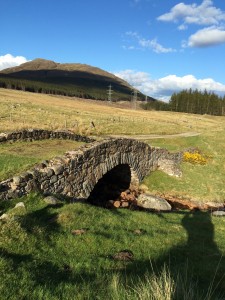
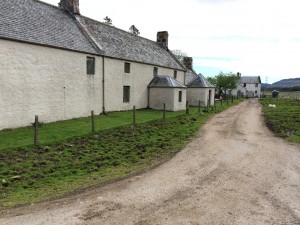
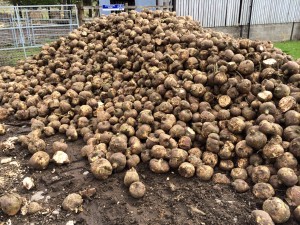
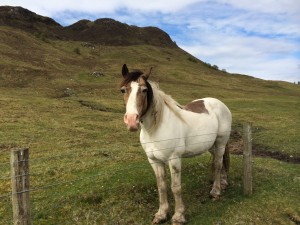
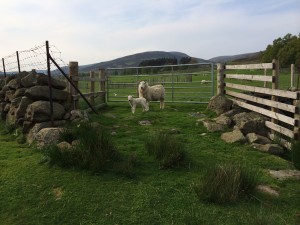
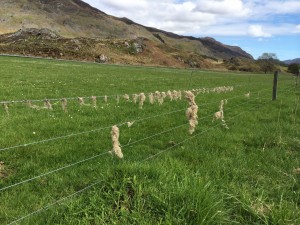
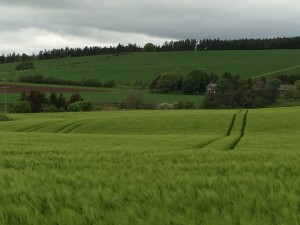

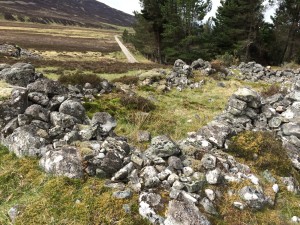
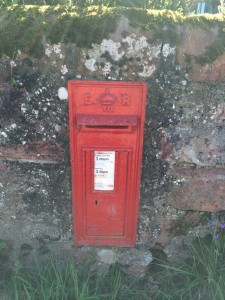
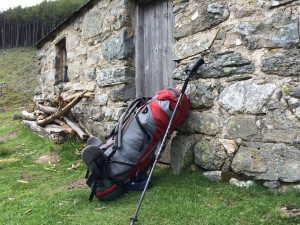

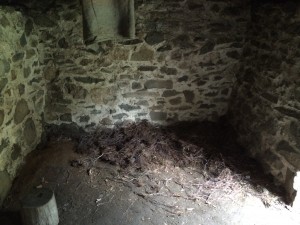
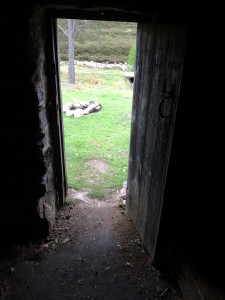
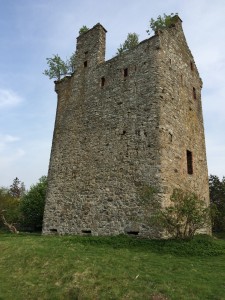
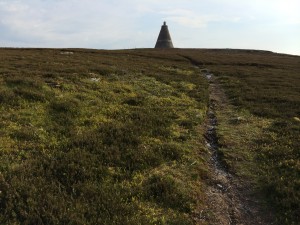
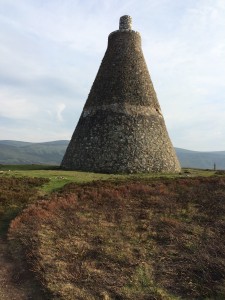
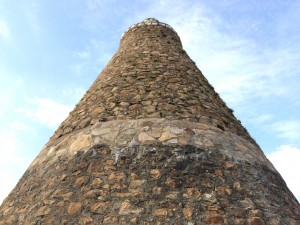
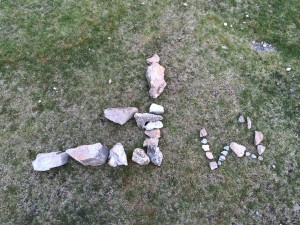
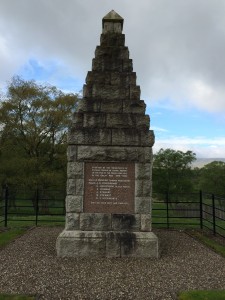
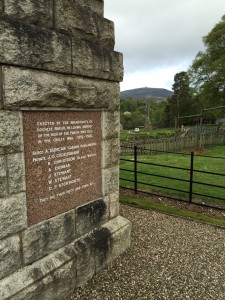
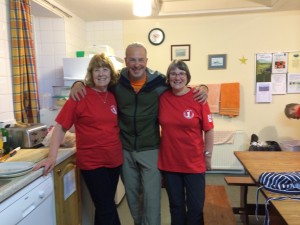













































Recent Comments